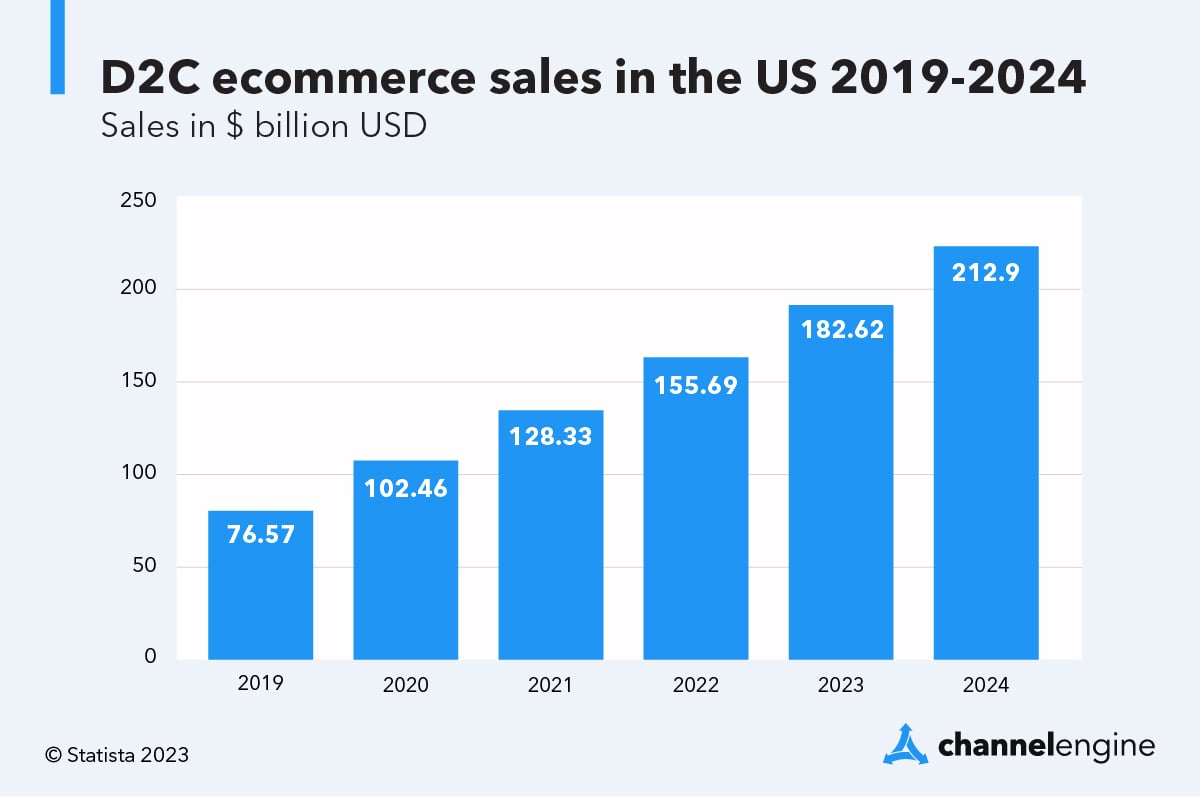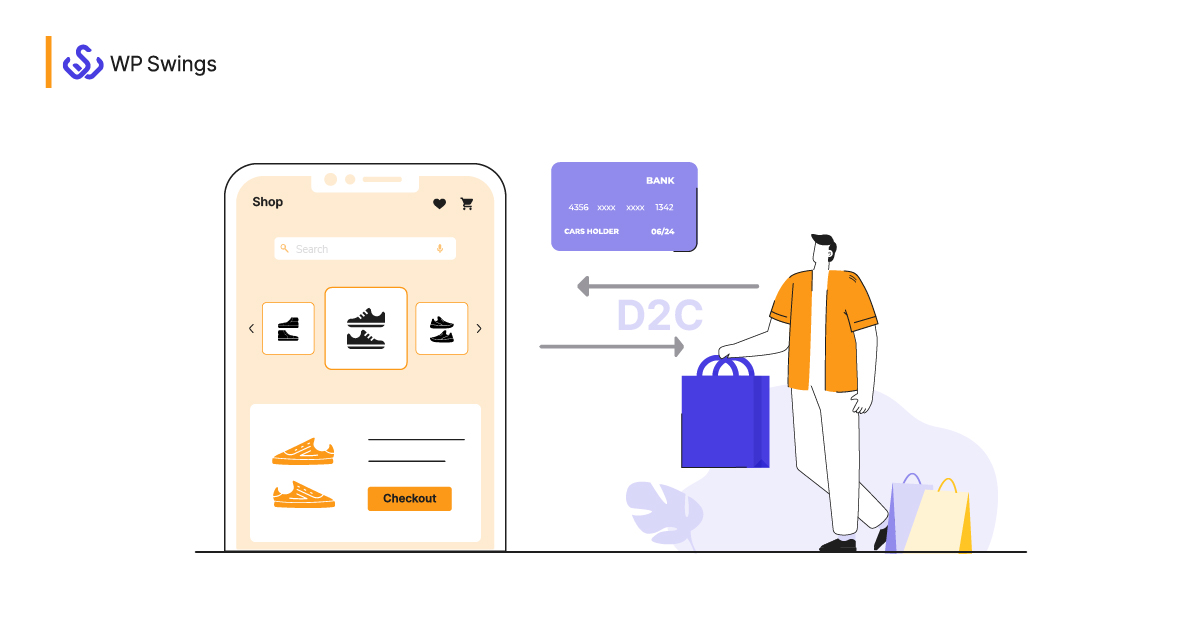D2C Ecommerce Agency Success Stories: Real Brands, Real Growth
Exploring the Prospective of D2C Ecommerce: A Comprehensive Guide for Businesses
The D2C ecommerce version presents a significant shift in just how brand names engage with customers. It makes it possible for business to bypass traditional retail channels, cultivating much deeper links and potentially boosted revenue margins. This technique is not without its complexities. Understanding the nuances of D2C ecommerce is vital for brands intending to prosper. What approaches can they take on to navigate this advancing landscape properly? The solutions may redefine their service approaches.
Recognizing the D2C Ecommerce Design

Key Advantages of D2C Ecommerce for Brands
The D2C ecommerce version offers brand names significant benefits, specifically regarding enhanced revenue margins. By removing middlemans, companies can retain a bigger share of sales revenue. Additionally, this direct partnership with consumers cultivates boosted brand name loyalty, encouraging repeat acquisitions and long-lasting involvement.
Boosted Profit Margins

Improved Brand Commitment
Building on the monetary benefits of D2C ecommerce, enhanced brand loyalty becomes an additional essential benefit for companies engaging straight with customers. By developing a straight connection, brands can foster deeper relationships with their consumers, obtaining understandings right into preferences and habits. This direct communication enables more individualized advertising methods, which reverberate strongly with consumers. Furthermore, brand names have the possibility to control their messaging and client experience, strengthening brand name worths and developing trust fund. When clients really feel a personal connection, they are most likely to return, support for the brand, and take part in area engagement. Ultimately, boosted brand commitment not only drives repeat purchases yet additionally cultivates an enthusiastic consumer base, further strengthening a brand's placement in the marketplace.
Difficulties Dealt With by D2C Brands
D2C brand names run into a number of significant challenges that can influence their success. Inventory monitoring issues can cause equip lacks or excess, complicating operations and consumer contentment. In addition, advertising and marketing budget constraints often restrict the capability to effectively involve and get to target market.
Inventory Administration Issues
Reliable supply management offers an awesome challenge for lots of brands running in the direct-to-consumer (D2C) space. These brand names usually grapple with rising and fall need, which can cause overstock or stockouts, ultimately affecting customer contentment and earnings. Furthermore, the absence of innovative supply tracking systems can result in inconsistencies in between real supply degrees and reported information, making complex order fulfillment. The varied array of items D2C brands typically provide additionally makes complex inventory management, as variations in shades, dimensions, and designs need even more thorough oversight. Many D2C organizations might struggle with minimal warehousing capabilities, leading to ineffective use of room and sources. Reliable stock monitoring remains a critical difficulty for D2C brand names aiming for sustainable growth and operational effectiveness.
Advertising Budget Plan Constraints
Steering advertising spending plan constraints is a significant difficulty for several direct-to-consumer (D2C) brand names. Limited funds often limit these companies' capacity to buy all-encompassing marketing strategies, resulting in minimized exposure in an open market. D2C brands frequently face the need to make the most of return on financial investment (ROI) while targeting details target markets effectively. This obstacle is worsened by increasing expenses in digital advertising and the necessity to allocate funds throughout multiple networks, consisting of social networks, online search engine, and e-mail advertising. Many D2C brand names have to innovate cost-effective advertising options, leveraging natural development strategies and influencer partnerships. Ultimately, efficiently maneuvering these spending plan restrictions is vital for sustaining development and achieving long-term productivity in the developing ecommerce landscape.
Strategies for Constructing a Successful D2C Ecommerce Company
As customers progressively seek direct links with brands, developing an effective D2C ecommerce company calls for a strategic strategy that prioritizes client engagement and trust fund. One reliable technique is to create compelling brand name narratives that reverberate with target market, promoting emotional links. Utilizing social media platforms can improve visibility and help with two-way interaction, enabling brands to involve straight with customers.Moreover, personalized experiences through tailored advertising efforts can significantly improve client retention and commitment. Carrying out loyalty programs and providing special deals can better incentivize repeat purchases.Streamlining the acquiring process is essential, making sure an user-friendly user interface that boosts the purchasing experience. Furthermore, transparent communication concerning shipping and returns constructs depend on and urges consumer confidence.Finally, actively looking for consumer feedback and replying to it shows a commitment to improvement and customer satisfaction, vital aspects in the competitive D2C landscape.
Leveraging Technology for Improved Customer Experience
In today's affordable D2C ecommerce landscape, innovation plays a critical function in shaping client experiences. Services progressively utilize advanced tools such as expert system, chatbots, and individualized algorithms to boost communications and streamline the shopping procedure. By integrating these technologies, brands can give customized product recommendations based on individual preferences and shopping actions, promoting a more engaging experience.Moreover, receptive site styles and mobile applications ensure that consumers can access solutions seamlessly throughout numerous tools. Improved settlement services, consisting of one-click check outs and electronic budgets, even more streamline deals, making it simpler for customers to make purchases.Data analytics additionally allows companies to collect understandings into customer actions, permitting constant renovation of services and offerings. On the whole, leveraging modern technology not only boosts customer fulfillment yet likewise grows loyalty, ultimately driving lasting success in the D2C ecommerce market.
Marketing Tips to Drive D2C Sales
Exactly how can brands effectively catch the interest of customers in a saturated market? To prosper in the direct-to-consumer (D2C) landscape, brands must use targeted marketing strategies. Making use of social media systems, brands can engage consumers through interactive content, influencer collaborations, and user-generated messages. Customized e-mail campaigns can additionally cultivate a sense of connection, supplying customized promos based upon customer actions and preferences.Moreover, storytelling plays an essential role in differentiating a brand's narrative, making it unforgettable and relatable. Brands should buy seo (SEARCH ENGINE OPTIMIZATION) to enhance presence, guaranteeing their products are easily discoverable online. In addition, leveraging data analytics enables companies to refine their marketing strategies and understand consumer trends much better. Ultimately, a multi-channel method that integrates creativity with data-driven understandings can significantly boost D2C sales, enabling brand names to stick out in a crowded industry.
Future Patterns in D2C Ecommerce
With the rapid development of technology and customer choices, the future of D2C ecommerce is poised for considerable change. Arising patterns indicate a change towards hyper-personalization, where brand names leverage information analytics to tailor offerings to individual consumer needs. This personalization enhances consumer experiences, cultivating loyalty and engagement.Moreover, sustainability is coming to be a crucial variable, with consumers significantly favoring brand names that prioritize eco-friendly practices - D2C Ecommerce Agency. Business are expected to take on transparent supply chains and sustainable products to meet this demand.The assimilation of man-made knowledge and augmented reality will in addition transform the purchasing experience, allowing customers to picture products in their settings before acquisition. In enhancement, social commerce is expected to expand, as platforms like Instagram and TikTok promote smooth purchasing experiences directly within social media.These trends jointly signify a dynamic future for D2C ecommerce, emphasizing customer-centric methods and cutting-edge modern technologies that redefine consumer communications
Often Asked Concerns
What Industries Benefit The Majority Of From D2C Ecommerce?
The current question highlights industries that grow via direct-to-consumer (D2C) ecommerce. Extremely, style, elegance, electronics, and food markets take advantage of helpful hints D2C versions to enhance brand loyalty, enhance consumer relationships, and optimize profit margins properly.
Exactly How Do Shipping Prices Affect D2C Pricing Strategies?
Shipping costs greatly affect D2C pricing approaches. Organizations need to balance these expenditures with affordable prices, considering consumer expectations and revenue margins. Efficient management of delivery can enhance consumer complete satisfaction and drive sales in direct-to-consumer versions.
What Repayment Options Should D2C Services Deal?
D2C companies should use diverse repayment alternatives, including credit/debit cards, electronic purses, and get now, pay later on services. This range enhances client benefit, boosts conversion rates, and satisfies various consumer preferences in the online purchasing this website landscape.
Just How Can D2C Brands Deal With Client Returns Efficiently?
D2C brands can manage customer returns efficiently by implementing user-friendly return policies, offering pre-paid delivery tags, and making sure prompt refunds (D2C Ecommerce Agency). Clear communication and streamlined processes enhance customer contentment and encourage repeat company
What Legal Considerations Exist for D2C Ecommerce Workflow?
Lawful factors to consider for D2C ecommerce operations include conformity with customer defense laws, data personal privacy regulations, intellectual residential property rights, and tax needs. Brand names have to navigate these complexities to avoid legal mistakes and ensure smooth operations. By removing middlemans, D2C brands can offer competitive pricing and promote a much more intimate partnership with their customers.The D2C model is characterized by its dependence on digital platforms, making it possible for brands to make use of social media, online marketplaces, and their own internet sites to engage with customers straight. D2C ecommerce promotes the collection of beneficial consumer information, making it possible for brand names to customize their offerings and advertising and marketing methods properly, inevitably driving sales and boosting margins. Furthermore, brands have the chance to manage their messaging and customer experience, reinforcing brand name values and building trust fund. As consumers increasingly look for direct connections with brands, developing an effective D2C ecommerce organization needs a tactical technique that focuses on client engagement and trust. D2C brand names can handle customer returns properly by their explanation carrying out user-friendly return plans, supplying pre paid shipping tags, and guaranteeing prompt refunds.